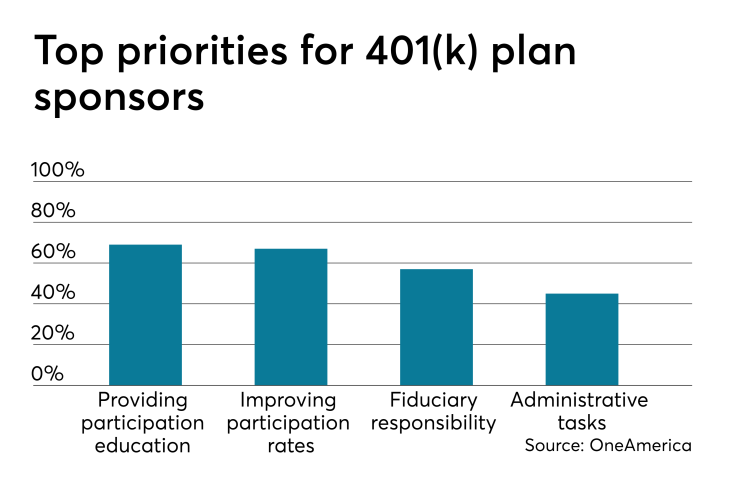LAS VEGAS — Rick Irace, chief operating officer of Ascensus’ Retirement division, an administrative and record-keeping provider, is bullish on what he calls the “well business,” an idea essentially to turn the financial wellness spotlight on the sponsors and participants — and educate companies on wellness in the process, he says.
Less than half of businesses with 50 employees or fewer offer a retirement plan, according to Morningstar data. At the NAPA 401(k) Summit conference of retirement advisers, Irace and Richard Schwamb, corporate retirement director at the Schwamb O’Day Group at Morgan Stanley, said that shortcoming represents a business opportunity for advisers. For the next size up, business with 51 to 100 employees, there is still opportunity, but it’s hardly as big since two-thirds of them offer a plan, they said during a conference session on how advisers can help small business.
Irace stresses the importance of features like auto-enrollment. “Do everything in your power to get them to use auto.”
The business opportunity is especially illustrative when compared with other numbers from the U.S. Small Business Administration, showing that small businesses account for 99% of all U.S. businesses, 48% of the workforce and 63% of new job creation.

For those small businesses that don’t offer a retirement plan, when asked why by Pew, about four in 10 of those businesses said that was that a financial wellness plan was too expensive, which was the most common answer. Indeed, they’re hyper aware of all business costs, Schwamb notes. Even those small businesses that offer plans, expenses can be a reason they avoid the matching funds feature.
To be sure, the smaller plans pay a higher percentage in plan expenses, according to Morningstar data. For plans with $1 million in assets or less, the expenses were 1.42%. It dropped steeply after that, going to 0.88% for plans with $1 million to $5 million. With the biggest plans, with more than $1 billion, expenses bottomed out at 0.37%.
Since many employees of small businesses don’t have retirement plans to begin with, Irace and Schwamb agreed that this segment was a gratifying work experience. Irace said he was used to working in office towers and wearing suits from his previous jobs, but his first day at his current job he found himself talking to the owner of a wholesale lumber yard who took notes on an old piece of wood.
“If you really want to help people, this is a place you can do it,” Irace says.





